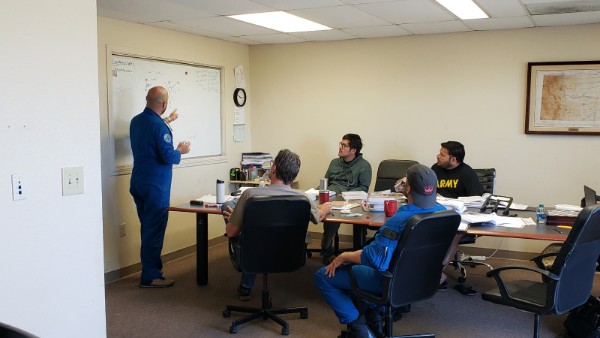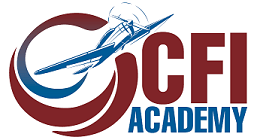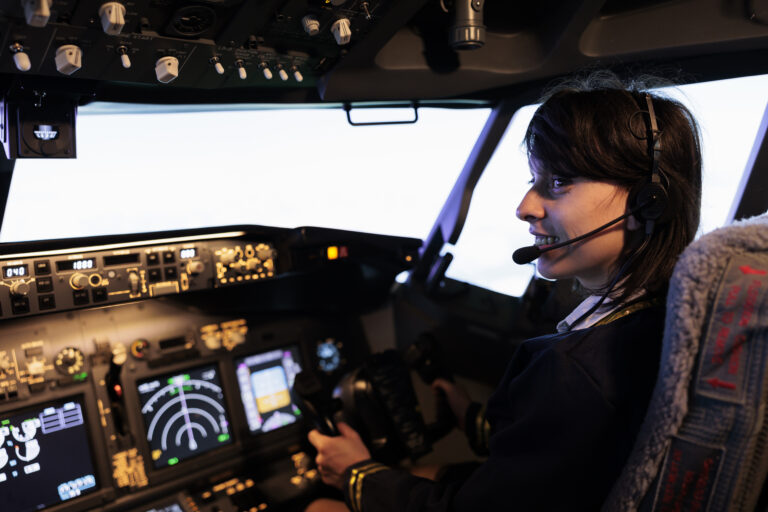Safety is the first priority in flight instruction, not only for you and your students, but for everyone working within aviation.


Safety is the first priority in flight instruction, not only for you and your students, but for everyone working within aviation. If a pilot is not safe, they cannot be effective.
Safety should be your first priority when instructing new pilots. You must always remember that safety is the number one goal of any flying lesson or practice session. This means making sure that all equipment is working properly before takeoff and paying close attention to weather conditions while flying so as not to put yourself or anyone else at risk of injury or death
The overall goal of safety-minded teaching is to help each student progress toward becoming a safer pilot and eventually a safer pilot and instructor.
Safety is the first priority in flight instruction, but it’s also the best way to ensure that you’re never bored or stressed out by your job as an instructor.
Instructors should understand how to effectively teach their students to fly safely through risk management and contingency planning.

Safety is the first priority in flight instruction. Instructors should understand how to effectively teach their students to fly safely through risk management and contingency planning.
Risk management involves assessing risks, mitigating those that can be mitigated and accepting those that cannot be mitigated. This process helps instructors have a clear understanding of what risks they are taking on as an instructor and how they will mitigate them or accept them if they occur.
In order for instructors to effectively teach their students about risk management, they must understand it themselves first! For example: If your student has been flying well but then starts making mistakes at certain points in the lesson (or maybe even during just one segment), there could be several reasons why this is happening–and only one of them might involve him being distracted because he forgot something important like his cell phone charger at home or something else equally trivial; however another reason could be because his attention span was waning from lack of sleep due to staying up too late watching videos online last night before getting up early this morning so he could make breakfast then go straightaway into class without having time beforehand
Teaching students how to deal with risk management includes explaining what types of risks they can expect as pilots and learning how to assess those risks before taking action.


Teaching students how to deal with risk management includes explaining what types of risks they can expect as pilots and learning how to assess those risks before taking action. The goal of teaching risk management is not to eliminate all risk, but rather to manage it in a way that makes sense for the situation at hand.
For example, if you were flying an airplane with your instructor and saw another airplane on radar far away from you (and therefore at no immediate risk), would it be better for him or her? If so, why?
Contingency planning begins with assessing your own skills and identifying any deficiency that may affect your ability to operate at an acceptable level of safety.
For example, if you have a medical condition that would prevent you from safely operating the airplane in all phases of flight, then it’s imperative that you find another instructor who can teach those lessons. Or if there are certain maneuvers or situations where you feel uncomfortable teaching because of previous experience or training deficiency, then again it’s best for someone else to take over those segments.
In order to identify these deficiencies, think back on past incidents or accidents involving flight instructors and see if they share any commonalities with how they were taught themselves: Was there something missing from their curriculum? Was there something they didn’t learn properly until after their training was complete? Did anyone ever tell them not do something because it was too dangerous–and did that warning ever stick with them throughout their careers as instructors?
Instructors must also be able to identify deficiencies in their students' performance so they can coach them appropriately.
As an instructor, you must also be able to identify deficiencies in your students’ performance so that you can coach them appropriately. Be sure to use feedback as an opportunity for teaching and skill building. If a student makes an error during flight training, take time to understand what went wrong and why it happened before coaching the student on how he or she might improve next time around.
It’s important for instructors not only because it helps prevent accidents but also because if an instructor has difficulty identifying risk management issues early enough, those issues could develop into bigger problems later on down the road–and potentially lead up until something goes wrong again during a solo flight!
If there are any questions about whether or not this course meets FAA requirements for certification purposes (which usually come up when someone tries registering online), contact AOPA’s Customer Service at 800-USA-AOPA (872-2672).
Instructors should focus on using feedback, risk management tools and contingency planning in order to keep their lessons focused on achieving the highest level of safety possible


As a flight instructor, you have the power to make or break your student’s experience. Feedback is an important part of this process and can be used as a tool for improving safety.
You should provide feedback to students in a positive manner that focuses on what they did well instead of what went wrong. Your feedback should also be specific and timely so that it can be acted upon immediately by your student. Additionally, your feedback should be constructive rather than destructive; this means that you should focus on helping them learn rather than just pointing out mistakes without offering suggestions on how they could have done things differently next time around. Finally, consistent objective assessment requires consistency between instructors who teach similar subjects (for example: ground school vs flight training).
Conclusion
We hope that this article has given you some insight into how you can use risk management and contingency planning in your flight instruction. The most important thing to remember is that safety is always the first priority, for yourself and for your students. If something doesn’t feel right about how they’re flying, then it’s up to us as instructors to help them find ways around those risks so everyone stays safe!






